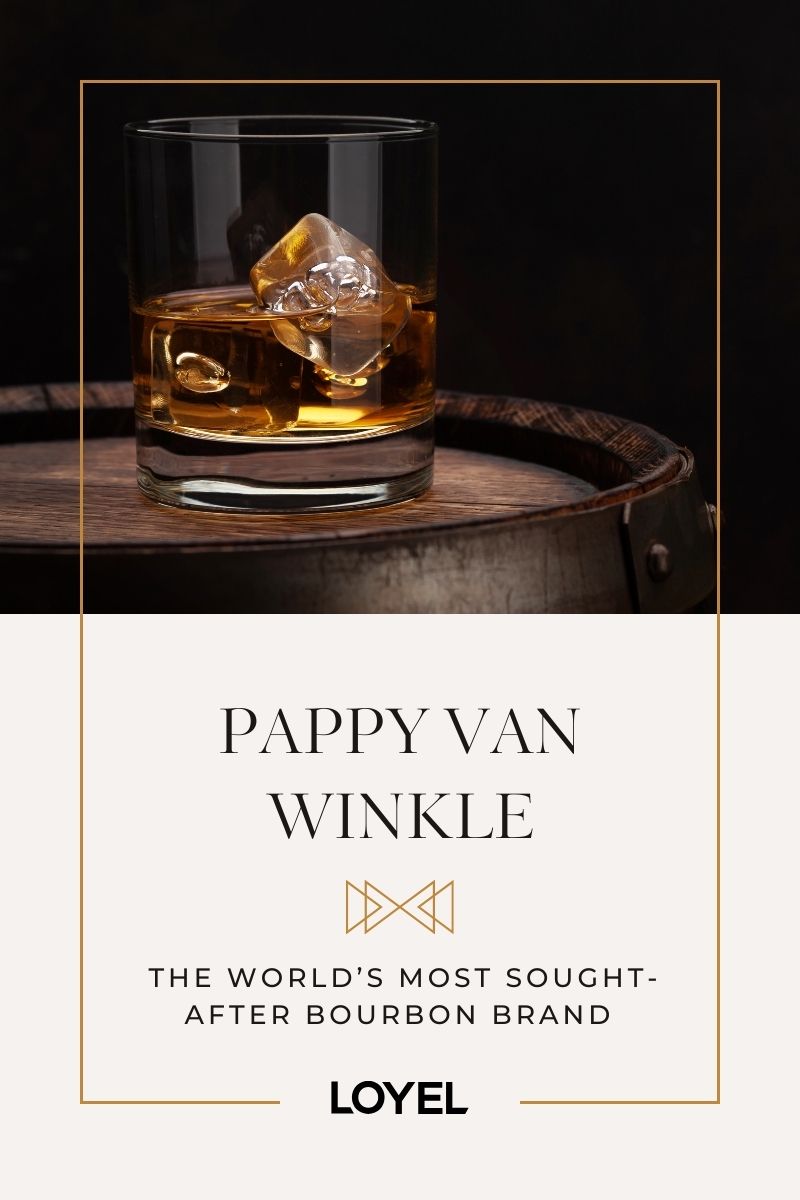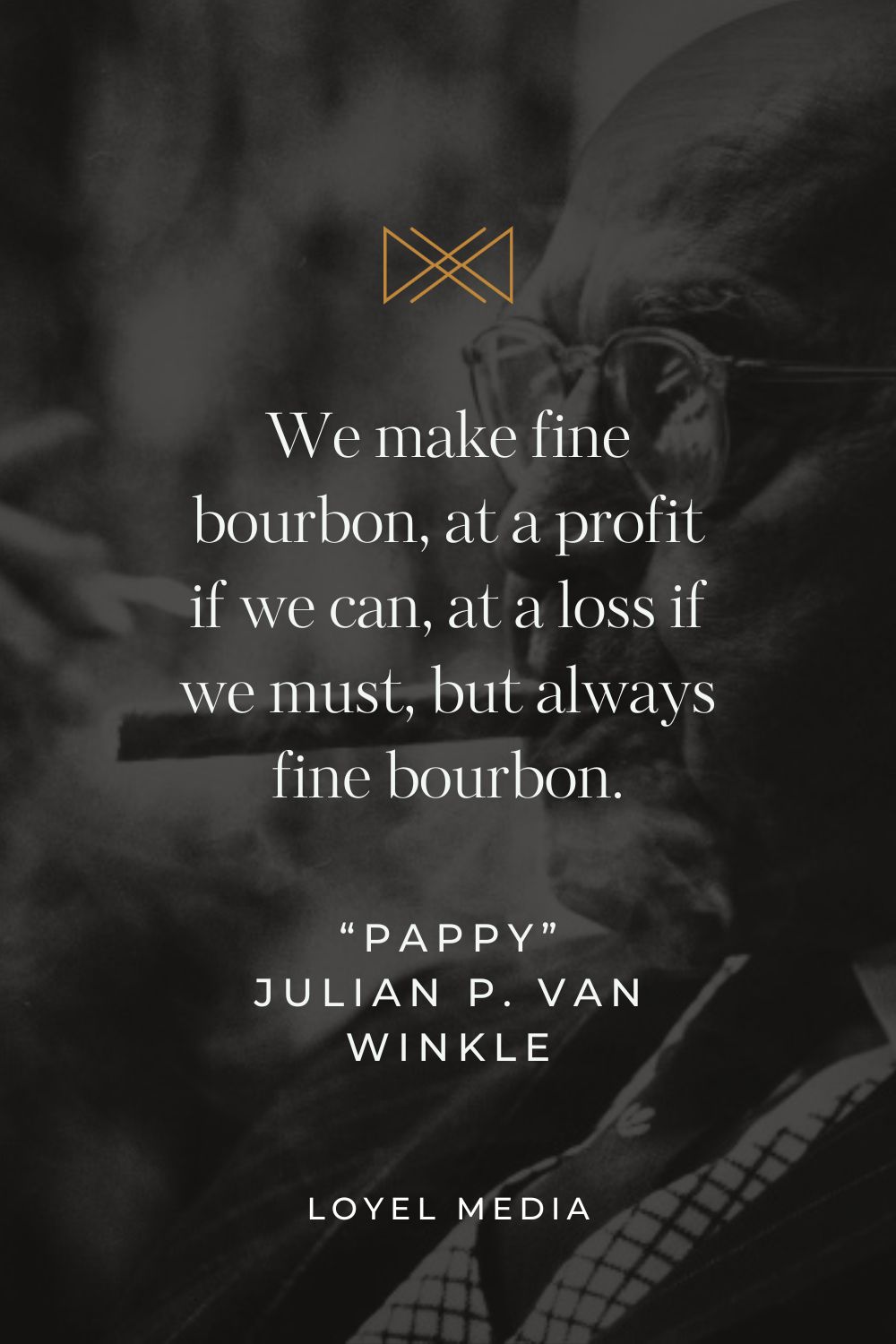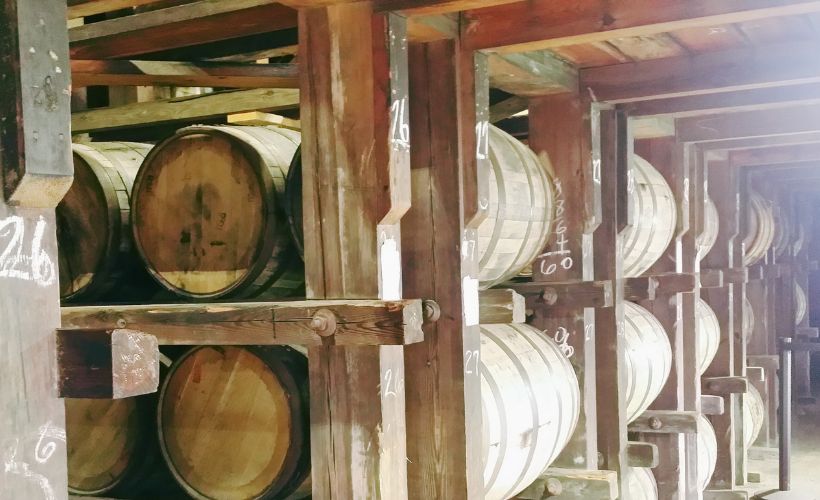How more than a century of bootstrap ingenuity and shrewd marketing built the iconic Pappy Van Winkle brand.
A rare bottle of Pappy Van Winkle’s 23-Year-Old Family Reserve bourbon recently sold at auction in New York for an astounding $52,500—eclipsing pre-sale projections and breaking the brand’s previous record.
What’s more, Pappy Van Winkle’s 20-Year Old Family Reserve is the #1-rated bourbon in the world, with a 99 out of 100 rating by the World Spirits Championship.
Enthusiasm for the “Pappy” family brand is enviable. And the history behind it is a marketing masterclass with invaluable insights for any business.

Whip-smart marketing practices behind the Pappy Van Winkle brand:
- Standing out as different
- Defining the mission
- Thinking long-term
- Tapping a niche market
- Creating demand
- Positioning for success
- Pricing for profit
- Maximizing unconventional marketing
First, a little backstory
In the late 1800s, just out of college, “Pappy” Julian P. Van Winkle traveled Kentucky by horse and buggy, selling liquor for Louisville wholesalers W.L. Weller & Sons.
He was a top performer with enough success to join a co-worker and buy up the operation when W.L. Weller passed away.
Even before this, the two salesmen were producing whiskey on the side at A. Ph. Stitzel, a distillery that crafted bourbon at a higher level than Weller.
Ultimately, Pappy and his partner would purchase Stitzel, too, and merge the Weller wholesaler and Stitzel distillery.
Stitzel-Weller Distillery opened on Derby Day in 1935, and Pappy ran it until the year before he died in 1965.
It would become the most famous distillery in the world and produce what is considered by connoisseurs to be the finest bourbon ever made.
Pappy’s distinguishing feature
Bourbon is a distinctly U.S. product. About 95% is made in Kentucky.
Bit of Trivia: There are more barrels of bourbon than people in Kentucky.
To be classified as bourbon, among other things, at least 51% of a whiskey’s mash bill (or recipe) must come from corn. The maker is at liberty to choose the other 49%. Rye was traditionally used as the second grain, then malted barley to round it off.
But rye wasn’t native to Kentucky. Little of it was grown in the state. Distillers shipped it in from the Midwest.
To distinguish his spirit, Pappy chose native Kentucky wheat as his secondary grain—making his bourbon a bit smoother and more complex.
Pappy introduced wheated bourbon to the masses and created a product unique to Kentucky.
The brew was around, but he was the first to produce it on a grand scale.
Pappy Van Winkle’s Brand Promise
Principled and larger than life, Pappy set a high bar. His steadfast and unwavering production standards have informed four generations of Van Winkle bourbon-making.
His image is the hallmark of the storied Pappy Van Winkle brand, and his mission is honored and celebrated still for its honesty and simplicity:
“We make fine bourbon, at a profit if we can, at a loss if we must, but always fine bourbon.”
Pappy’s granddaughter, Sally Van Campbell, says, “He believed in making fine bourbon. That was his bottom line. And he believed that if you made it right, everything else would take care of itself.”
Surprisingly, it would be thirty years after his death before the first bottle of bourbon that bore the name “Pappy” hit shelves.
Long-term thinking
In its heyday, during the 1950s and 1960s, Stitzel-Weller Distillery produced 800,000 cases a year of bourbon.
By the 1970s, cheap bourbon flooded the market, and the family distillery was sold.
Pappy’s son, Julian Van Winkle, Jr., had the foresight to retain the rights to procure old stocks from the distillery and keep the Van Winkle brand name as a condition of the sale.
Soon, bourbon would hit yet another rough patch. The younger generation wasn’t keen on drinking what their parents drank. Vodka and rum were becoming increasingly popular.
When Julian Van Winkle, III, Pappy’s grandson, inherited the business in 1981, it was little more than a small distribution company.
Still, Julian, now third in line at the reigns, saw the opportunity. There was a gap in the market he could not only fill but dominate.
Hardly anyone was selling aged bourbon. Let alone premium, aged, wheated bourbon. It was a niche whiskey Julian enjoyed and understood well.
This venture would allow him to re-envision the brand and uphold Pappy’s promise to never compromise on quality.

Building a business around aged bourbon would mean a substantial investment of time and money for even a shot at big dividends further down the road.
Julian was 32 years old, with a wife and four young children, when he took over the family business after his father died: “I didn’t know if I could make it work—or not. But it was the only thing I knew how to do, so I kept at it.”
Like his grandfather, Pappy, he would bootstrap his endeavor.
Tapping into an underserved market
Julian started buying up old inventory of his family’s bourbon from struggling distilleries and other brands that had been sitting in barrels for years.
He launched the Pappy Van Winkle label and began releasing his premium bourbon.
Looking back, he says, “What really kept me going was that I knew I was selling a great product. I just had to convince whiskey consumers of that, too.”
In 1994, Julian released the world’s first 20-year-old bourbon. It was a risk. At the time, no one had ever sold bourbon this old.
Soon, he would find out if trusting his gut instinct was the right call.
Julian remembers the moment his fortunes turned.
In Chicago, his 20-year-old Pappy was awarded an unprecedented 99 out of 100 rating at the World Spirits Championship.
Julian says, “After that, the phone started ringing off the hook, and we were short—didn’t have nearly enough of it.” [CNN]
Before long, Pappy Van Winkle would become not only the world’s most sought-after bourbon but also its most sought-after spirit.
Pappy Van Winkle’s strategy of scarcity
The Pappy that’s distilling and aging today will be ready to drink in 15, 20, or 23 years.
Low production and high demand make Pappy extremely hard to find.
Julian stood by Pappy’s conviction to always bottle less than you can sell: “We only release stock once a year because we’re a small company.”
By limiting supply, demand increases, and the brand takes on an air of exclusivity.

It can be ideal for small businesses facing off big competitors. Julian makes the point, “Companies often get into trouble when they try to grow too fast. If you make a great product and keep production low, you’ll never get stuck with big inventories when the economy turns tough.”
“That’s been the downfall of a lot of bourbon producers,” according to Julian. “They just make too much of it. It loses all its cachet and is not as special.”
Pappy Van Winkle’s product positioning
Much the same as his grandfather, Julian sticks to the high-end market.
Bourbon historian Michael Veach remarks, “[Julian] had the advantage of purchasing only what he thought was good whiskey and passing on barrels below his standards.”
As Pappy touted in a 1949 speech to his distributors, “We do not like the phrase, ‘We must meet the competition,’ unless you mean the competition of the very best and highest-priced brands on the American market.”
[ Read: Expert Tips from the Golden Age of Advertising ]
Pappy knew where his product fit in the marketplace and had no interest in competing with lesser brands.
His would be a top-shelf bourbon seeped in tradition—the finest expression of indulgence and craftsmanship.
Pappy Van Winkle’s pricing methodology
Julian shares, “It was hard for our family to stay in business because putting away bourbon for so many years costs a lot of money, and it’s just sitting there for 10 to 23 years, so it’s an expensive deal.”
Aged bourbon is pricey for a lot of reasons:
- Years pass before it’s ready to drink
- Nearly a quarter of the bourbon evaporates while aging
- Barrels are stored in rickhouses for years
- Year-over-year property taxes are imposed on each barrel.
The rub is if a barrel of bourbon has been aging for ten years, the owner pays the barrel tax ten times.
Bit of Trivia: By 2026, Kentucky will gradually phase out the bourbon barrel tax, eliminating it altogether by 2043.
The time, craft, and resources that go into producing a product at this level—make it rare, allowing Pappy Van Winkle to command a premium in the marketplace.
Pappy Van Winkle’s non-traditional marketing approach
Julian was running a small operation on a shoestring budget. He rolled up his sleeves and pounded the pavement to get the word out about his whiskey.
Julian would use—what were back then unconventional methods to promote his brew.
He couldn’t afford to advertise, so he got creative.
He orchestrated bourbon tastings, hosted whiskey-paired dinners, and placed Pappy Van Winkle in high-end restaurants where his 23-year-old Pappy would sell for $50 a glass.
At the urging of a colleague, Julian went so far as to pull together a Van Winkle-type study at trade shows and events—with wingback chairs, oriental rugs, bookshelves, and Pappy’s image hanging above a make-believe fireplace—to attract potential distributors.
Pappy was showing up on the radar with impeccable timing.
Just down the road, the internet would break into the mainstream. By the early 2000s, social media would take off.
Online and off, a surge of word-of-mouth buzz would supercharge the brand, cultivate customer loyalty, and boost revenue to unprecedented heights in the industry.
Wrapping up
Through all the setbacks and adversity, Julian came out on the other side with a thriving heritage brand that enjoys worldwide name recognition.
It took unquestionable resilience, a lot of sweat, and a bit of luck to shepherd the family business through hard times for the next generation.
In his book, Pappyland, award-winning journalist Wright Thompson writes: “Indeed, Julian and his wife Sissy have been working closely with their four children to create a solid succession plan.”
Julian’s son, Preston, joined him in 2001 to help run the business. And his triplet daughters created Pappy & Company, a bourbon-inspired lifestyle brand.
“We have all been working for two years or so on a family succession plan for both the dry goods business and our whiskey business,” Julian says. “It is not easy. But we are learning how to do it right.”
Sources:
Comments +